Performance
Let’s start off looking at the block restriction. Restriction is the amount of pump pressure it takes to push a certain amount of coolant through a block. To measure this we set up a differential manometer across the block – this will measure the pressure drop. Then we vary the flow of coolant with a tap and measure flow using a large King Instruments rota-meter.
Let’s start off comparing against the three top performers in our last review:
While the NEXT block does get more restrictive at higher flow rates, it’s essentially the same as the Heatkiller and CPU-390 at 1GPM and below. This is perfectly acceptable even though we’d prefer something more like the Raystorm Pro’s performance. If we compare to all the other CPU blocks we’ve tested then the plot would get confusing, but let’s single out the data at only one flow rate (1 GPM) to make it easier to compare:
Our rule of thumb here is that restriction should be better than 1PSI at 1GPM. It’s somewhat arbitrary of course, but it’s easy to remember. Most blocks meet this requirement, some with a lot of margin to spare. The NEXT is clearly worse than the median, but not substantially so.
Thermal performance
While a block’s restriction is informative, the real test is one of thermal performance – how well can the water block cool a CPU. The block was tested on one sample of Intel’s I7-5820K CPU. The block was mounted 6 times in two different orientations for a total of 12 runs. The CPU was overclocked to 4.2GHz and loaded with a custom Prime95 run that utilized all cores. Data was logged for two hours and a 15 minute subsection of this data was chosen automatically for processing by excel based on the lowest standard deviation of the 15 minute window’s air temperature. 15 minutes of data is long enough to provide enough averaging for an accurate measurement while being short enough to avoid any ambient temperature spikes or shifts from affecting the data. As a reminder – when we talk about block orientation we use two definitions. Regular means that the block’s logo is the “correct” horizontal orientation when placed on a normal motherboard in a normal tower case. This for example would be “regular” for the NEXT block:
“Goofy” on the other hand is a 90 degree rotation from regular:
CPUs usually prefer one orientation because the CPU’s die is not symmetric. In addition most modern water block designs use micro channels orientated horizontally or vertically with a central inlet. These channels will normally cool best when the central inlet to the micro-channels aligns with the longest side of the die. CPU die alignment is different on the “mainstream” chips vs the “high end enthusiast” chips. For example the 2700K/3770K/4770K/6700K usually have all generally preferred one orientation, while the 3930K/4930K/5930K/6800K have all preferred the other orientation. The orientation isn’t always the same for all water blocks because manufacturer’s are not consistent in how their branding lines up with the micro-channels in the block. For this reason even though we might be able to guess the correct orientation based on the block internal design we still test a new block to make sure.
For our X99 based CPU the NEXT block definitely preferred to be in a “Goofy” orientation:
This alphabetical list isn’t the best for comparing the block different blocks. Let’s switch to ordering by performance. Let’s also remove the worse performing mounts to make it simpler and compare only the best performing orientations:
While the NEXT comes in fifth place, in reality this is very close to the CPU-390i and Heatkiller IV that we were raving about earlier in the year. If it wasn’t for the newly released Eisblock that just got done testing this week the NEXT would essentially be within the margin of error for the top spot. Bear in mind that margin of error in testing may be larger in testing than you may expect. Even if we can measure a block within a certain amount of accuracy on this CPU sample there is inherent variation between CPUs which is more and more of a problem as block performance increases. For example if we compute the 99% confidence intervals which represent fairly well the spread of results due to mount variation alone we can see that there is plenty of overlap between results:
This plot does however serve to show that the NEXT’s mount system gives a very repeatable mount. The mount I did think could apply a bit more pressure though and this would most likely have improved performance a little.
Now again, bear in mind that this is only one test of one CPU. Other CPU samples and designs will have different bows and may give slightly different results. From this data we can conclude the water block is performing comparably to some of the best blocks out there on this CPU. But other CPUs may be different. This is why AquaComputer also have the “VARIO” version of the block that let’s you fine tune the bow of the block’s base. We’d love to play with that version and see if we can get some better performance numbers. Certainly the TIM spread looked like there are improvements that could be made in bow and pressure.







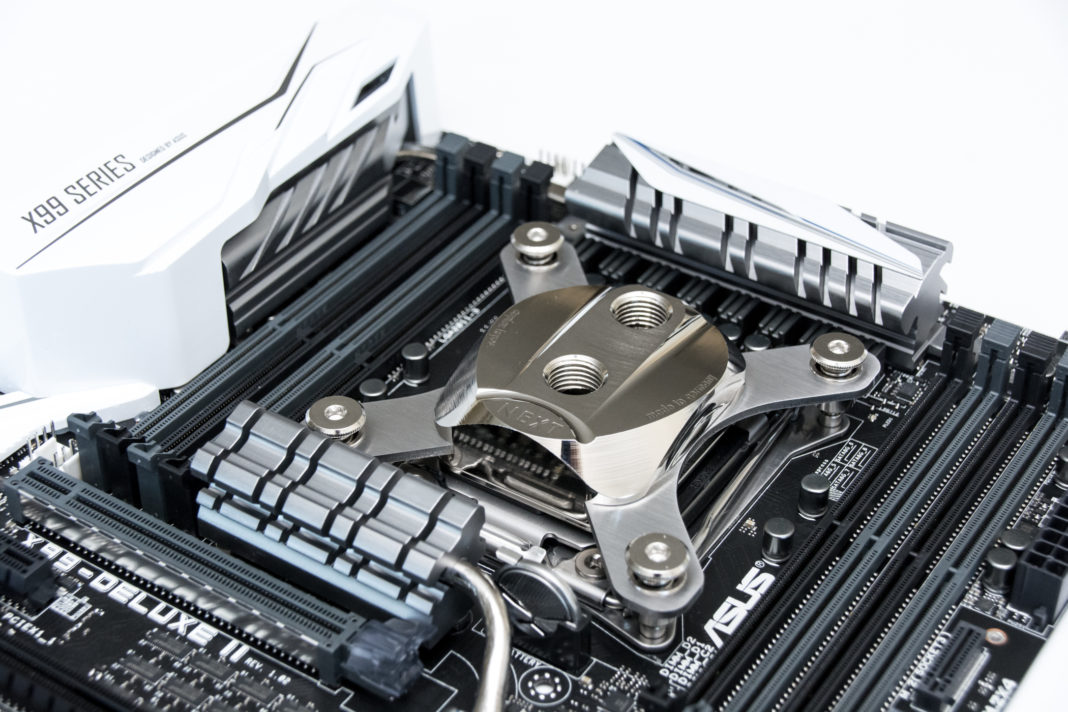
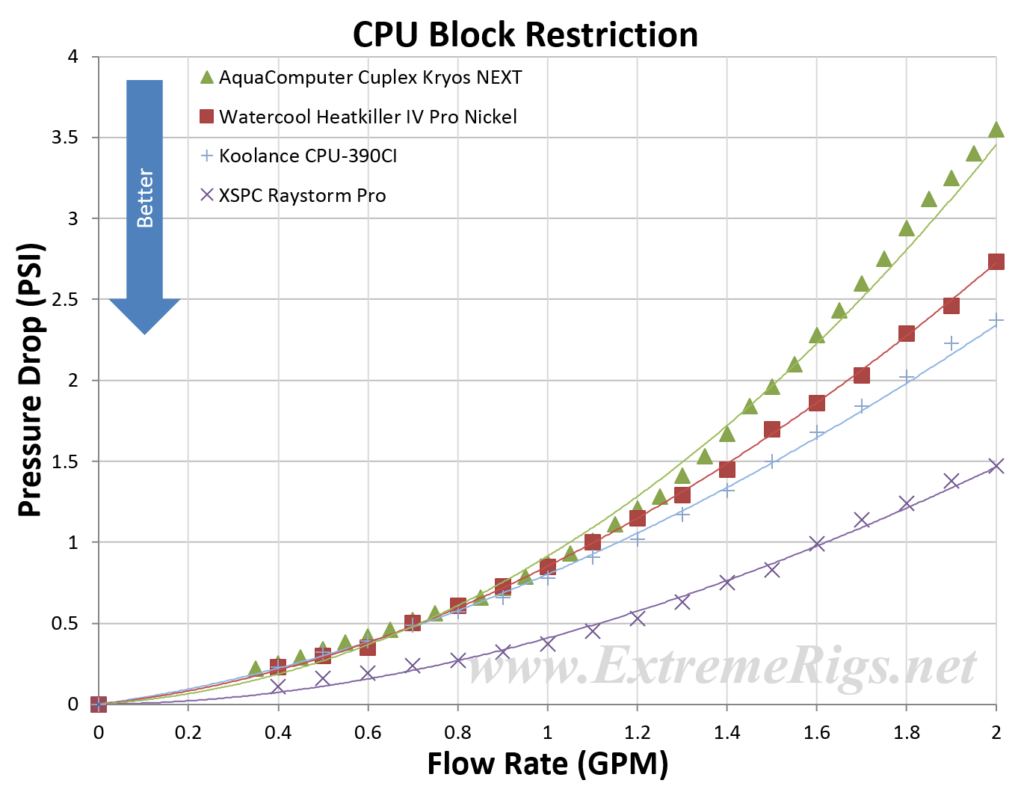
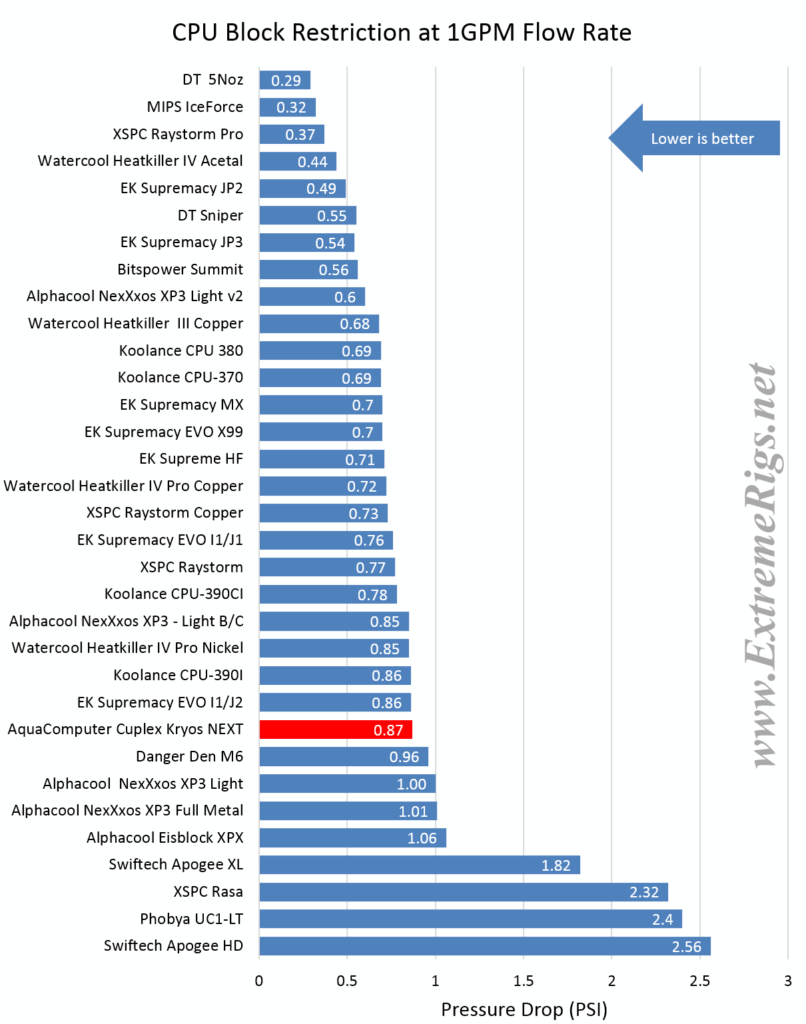
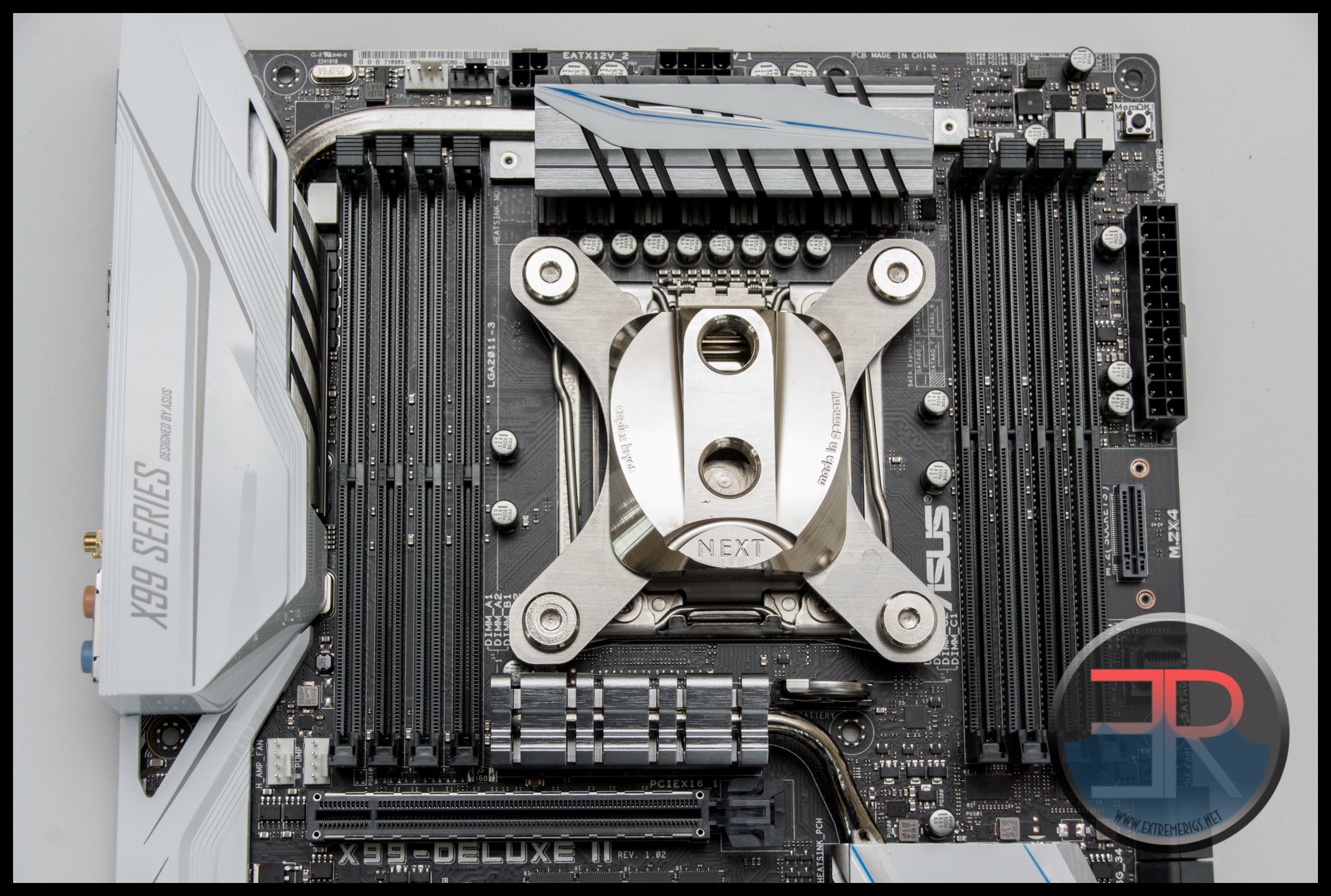

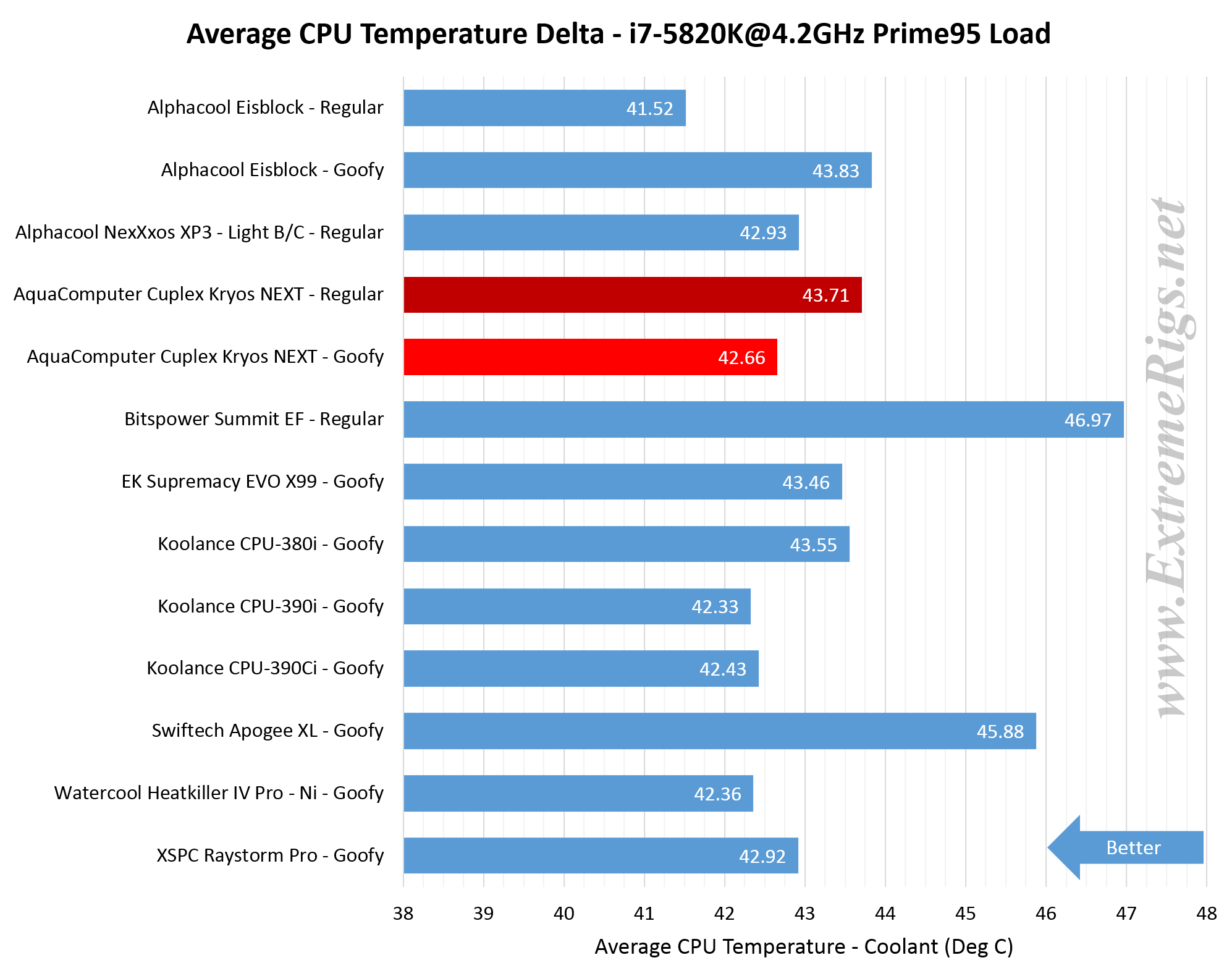
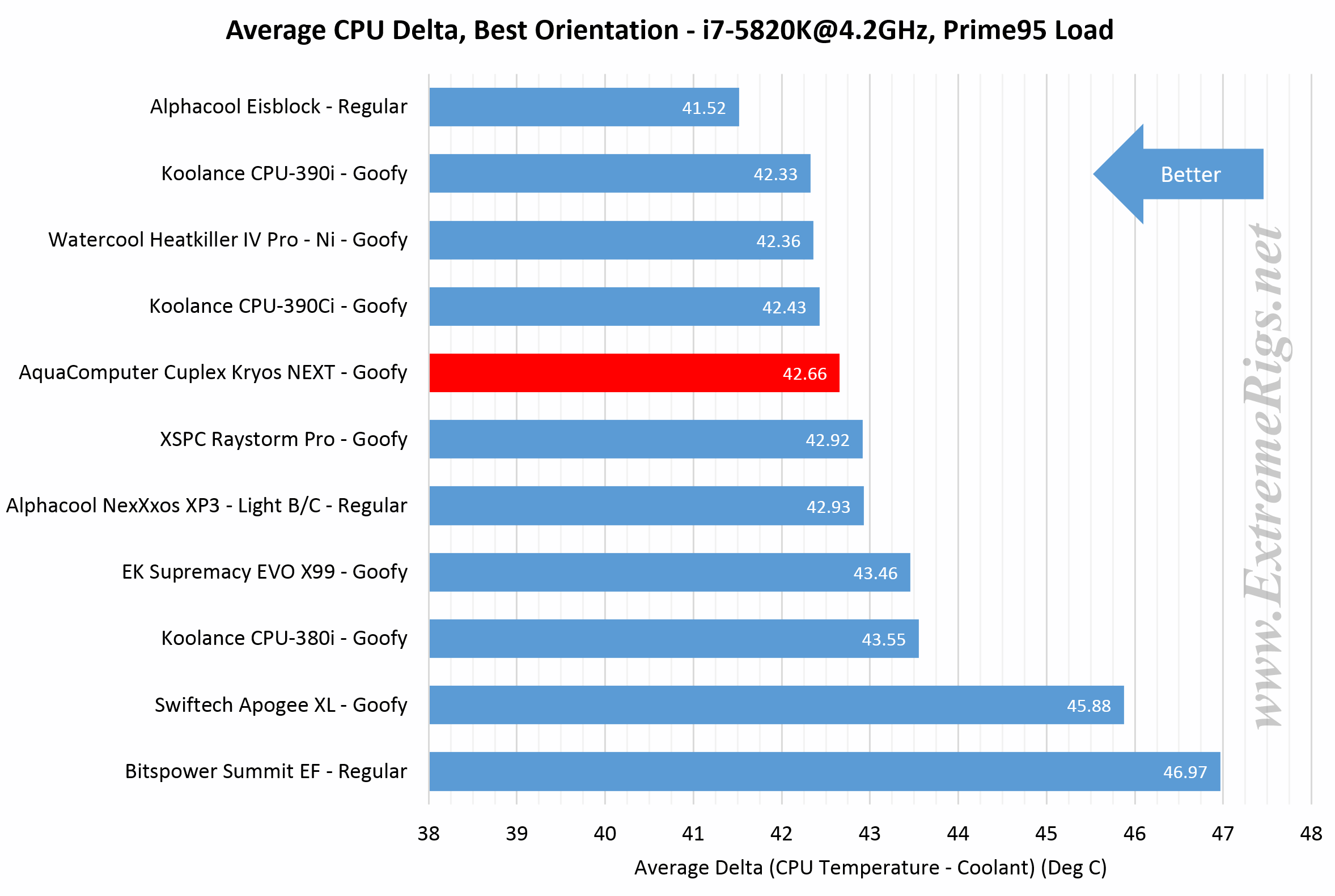




hmmm… I can see alphacool eisblock xfx in the test, but where is review of it?
It is now up 🙂 https://goo.gl/DJ2Cp8
Comments are closed.